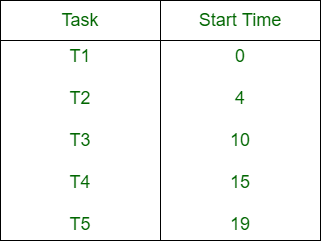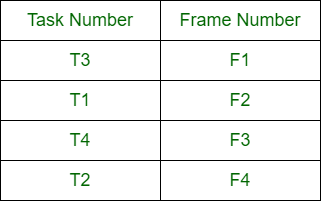Difference between Table-driven and Cyclic Scheduling
Last Updated :
14 May, 2020
Clock-driven scheduling is the scheduling algorithm in which the scheduling points are determined by the clock interrupts. Clock-driven scheduling is of two types:
1. Table-driven Scheduling :
In table-driven scheduling, the start timing of all tasks are precomputed and it is stored in a table at the time of configuration of the system. The table storing the timing of scheduling of all tasks is known as schedule table.

2. Cyclic Scheduling :
In cyclic scheduling, the precomputed schedule is repeated again and again. Each task in the task set is repeated identically in each cycle.

Difference between table-driven and Cyclic Scheduling:
| TABLE-DRIVEN SCHEDULING |
CYCLIC SCHEDULING |
| Start time of tasks is precomputed and thus tasks are scheduled. |
Precomputed schedule is repeated again and again. |
| Each task is scheduled only once. |
Each task is scheduled repeatedly. |
| Table-driven scheduling is less used in large applications. |
Cyclic scheduling is quite often used in large applications. |
| It is not quite efficient. |
It is efficient than table-driven. |
| It sets timer whenever a task is scheduled. |
it sets timer only when system initiates scheduling. |
| It is not often used in embedded systems. |
it is often used in embedded systems. |
| In case of selection of timing frame it is more proficient. |
It is possible to select a large size of timing frame. |
Share your thoughts in the comments
Please Login to comment...